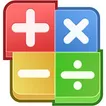













































































































































































































































































Puzzle Games: Engaging Your Brain with Fun and Cognitive Benefits
Puzzle games have long been a staple in the world of entertainment, offering a delightful blend of fun and mental stimulation. These games come in various forms, from the traditional jigsaw puzzles and crosswords to the more contemporary logic and trivia games that populate digital platforms. They are designed to challenge the mind, encouraging players to think critically, solve problems, and sometimes, to think outside the box.
The appeal of puzzle games lies in their ability to cater to a wide audience. They are not bound by age or skill level, making them accessible and enjoyable for children, adults, and seniors alike. Whether it’s a simple game of matching shapes and colors or a complex enigma that requires hours of concentration, there’s something inherently satisfying about the process of piecing together a solution.
Beyond their entertainment value, puzzle games are also recognized for their cognitive benefits. Engaging with these games can enhance memory, improve concentration, and develop problem-solving skills. They often require players to recognize patterns, remember information, and focus on tasks for extended periods, all of which contribute to a sharper mind.
The evolution of puzzle games from physical boards and pieces to digital screens has only broadened their reach. Now, with just a few taps on a smartphone or clicks on a computer, a vast array of puzzles is at our fingertips. This digital revolution has made puzzle games more accessible than ever, allowing people to engage with their favorite brain teasers anytime, anywhere.
In essence, puzzle games are more than just a source of amusement; they are a form of mental exercise that can lead to improved cognitive function. They offer a unique combination of fun and brain engagement that can benefit players of all ages, making them a valuable addition to anyone’s leisure activities or daily routine.
Jigsaw Puzzles: From Classic Pieces to Digital Masterpieces
Jigsaw puzzles have captivated minds for generations, with their intricate pieces coming together to reveal a complete picture. This timeless pastime has seamlessly transitioned from physical tabletops to glowing screens, evolving into digital masterpieces that continue to charm a diverse audience. The classic jigsaw puzzle, once confined to cardboard cutouts, now thrives in a virtual space where puzzles can be assembled with the click of a mouse or the swipe of a finger.
The cognitive advantages of jigsaw puzzles are well-documented. They are a form of mental gymnastics, enhancing spatial awareness and problem-solving abilities. As players fit piece after piece, they exercise patience and attention to detail, skills that are transferable to everyday life. The satisfaction of snapping the last piece into place is as rewarding digitally as it is physically, if not more so due to the limitless possibilities that digital platforms offer.
Digital jigsaw puzzles have democratized the puzzle-solving experience, making it easier for enthusiasts to access a vast array of images and difficulty levels. From serene landscapes to abstract art, the variety is endless, ensuring that there is always a new challenge waiting to be tackled. Moreover, these puzzles can be paused and resumed at leisure, fitting effortlessly into the busy lives of modern puzzle lovers.
The popularity of jigsaw puzzles across generations is a testament to their enduring appeal. They bridge the gap between traditional family activities and the digital entertainment of today, offering a wholesome and intellectually stimulating experience. Whether as a solitary endeavor or a communal activity, jigsaw puzzles remain a beloved genre, continuing to engage and enhance the minds of players around the world.
The World of Puzzle Games: A Diverse and Expansive Universe
The landscape of puzzle games is as varied as it is vast, encompassing a spectrum of challenges that cater to every preference and skill level. From the casual player seeking a quick mental diversion to the dedicated enthusiast pursuing complex riddles, the genre offers a rich tapestry of interactive experiences. Technological advancements have played a pivotal role in this expansion, introducing novel gameplay mechanics and immersive environments that redefine what a puzzle game can be.
The rise of online platforms has made puzzle games more accessible than ever, with countless free options available at the click of a button. These games often incorporate dynamic elements such as time constraints or competitive leaderboards, adding an extra layer of excitement to the cerebral pursuit. The digital realm has also enabled the creation of vast, interconnected communities where players can share tips, celebrate victories, and even collaborate on solving the most perplexing puzzles.
In this expansive universe, the traditional boundaries of puzzle games are continually being pushed and redefined. New genres emerge, blending puzzles with adventure, strategy, and narrative elements, creating hybrid experiences that appeal to a broader audience. The versatility of puzzle games ensures that there is always something new to discover, a fresh challenge to engage the mind, and a novel way to play.
The enduring popularity of puzzle games is a testament to their ability to evolve with the times while maintaining the core elements of strategic thinking and problem-solving. As they adapt and grow, they continue to offer a sanctuary for the mind, providing a space where logic, creativity, and persistence can flourish. Whether through connecting abstract shapes or unraveling intricate storylines, puzzle games invite players to embark on journeys of intellectual discovery and fun.
Exploring the Social and Cultural Impact of Puzzle Games
Puzzle games transcend mere entertainment, influencing social dynamics and cultural narratives in profound ways. They serve as educational tools, sharpening minds and fostering critical thinking from a young age. In classrooms around the globe, puzzle-based learning initiatives have demonstrated that these games can make complex concepts more digestible and engaging for students.
Beyond the educational sphere, puzzle games have carved out a niche in the realm of social interaction. They act as common ground for community building, where individuals gather, either in person or virtually, to collaborate and compete. The shared experience of tackling a puzzle fosters camaraderie and communication, bridging cultural and generational divides.
In popular culture, puzzle games often reflect societal trends and values, embedding themselves in various forms of media and art. They challenge audiences to engage actively with content, offering a more interactive form of consumption. This integration into the cultural fabric underscores the versatility and universal appeal of puzzle games.
Furthermore, the therapeutic potential of puzzle games is increasingly recognized. As tools for cognitive rehabilitation, they assist in the recovery of individuals with brain injuries or neurological diseases. For the wider population, the calming effect of solving puzzles provides a form of stress relief and mental respite in a fast-paced world.
In essence, puzzle games are more than a pastime; they are a cultural phenomenon that promotes learning, fosters social bonds, and offers therapeutic benefits. Their impact is felt across various aspects of life, proving that the humble puzzle can indeed be a powerful force for good in society.